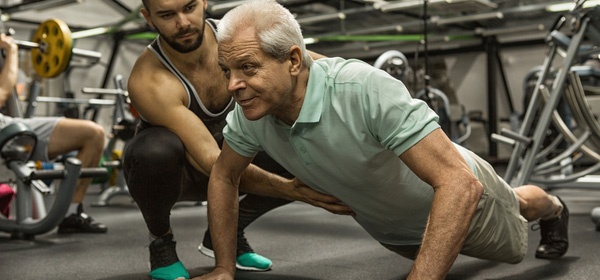Your pecs won’t be pumped, your butt will sag and your tummy won’t be taut … one day. But how do we postpone that day?
“Use it or lose it” is the age-old advice from physiotherapist and YourLifeChoices friend Jason Lee.
“Ageing affects all muscles,” he says, “with muscle mass and strength diminishing in each decade after we reach 30.”
Sobering news indeed.
It takes only two weeks of not using your legs to lose a third of your muscular strength, Science Daily tells us, citing a University of Copenhagen study.
And the International Osteoporosis Foundation says that while muscle mass starts to decline as we approach our 40s, the pace picks up when we reach our 60s.
The rate of decline will vary from person to person, but the average loss is 3 to 8 per cent of muscle mass per decade, but more if you lead a sedentary lifestyle, and more still if your nutrition is poor.
What can we do?
The simple advice is to get active, eat well, keep your mind ticking over and have a regular check-up with your doctor.
Exercise
If you’re mobile, you can walk, run, swim, cycle, climb stairs. No gym membership or personal trainer required. Push-ups (gentle or full), sit-ups, squats and arm curls will keep you in touch with the areas of your body that need most attention. If you want to walk in hilly areas, climb a mountain or just stay generally fit, the quadriceps – the four muscles on the front of the thigh – need to be strong.
Some of the most effective exercises to keep them strong are also the simplest. Try these two:
1. Leg-raisers
Lie on your back on a flat surface. Bend one knee to a 90-degree angle and keep your foot flat on the floor. Slowly lift the other leg 30 centimetres off the floor and hold for five seconds. Lower, relax and repeat 10 times – or build to that target.
2. Wall slide
This exercise is good for your quads, glutes and calf muscles. Stand against a wall with your feet shoulder-width apart. Slowly bend your knees and slide down the wall until the tops of your legs are parallel to the floor. Hold the position for five seconds, straighten and repeat.
Loading up
Resistance training – with hand-held weights or elastic bands – is another simple way to build or maintain fitness. Studies show that progressive resistance, where the level of resistance is gradually increased, can dramatically improve muscle strength and, as a result, the ease with which you perform simple but important movements, such as getting up from a chair or climbing stairs.
Go to 10 forms of resistance training for inspiration.
Nutrition and supplements
Eating enough protein is vital in maintaining muscle mass. Dieticians recommend that adults eat 1 to 1.2 grams of protein (meat, seafood, tofu, lentils, beans, quinoa) per kilogram of bodyweight daily.
One vitamin in particular, D, is closely linked to lower muscle strength. If you’re not getting enough sunshine exposure – and be aware that older skin has a reduced capacity to synthesise the vitamin – a supplement may be required. But check with your doctor who can organise a simple blood test to assess for vitamin D level.
NOTE: Always consult your doctor before you embark on a new exercise program, and try to exercise in a group.
Which exercise works best for you?
Related articles:
Exercise your whole body
Exercise boosts memory function
Exercise without trying

